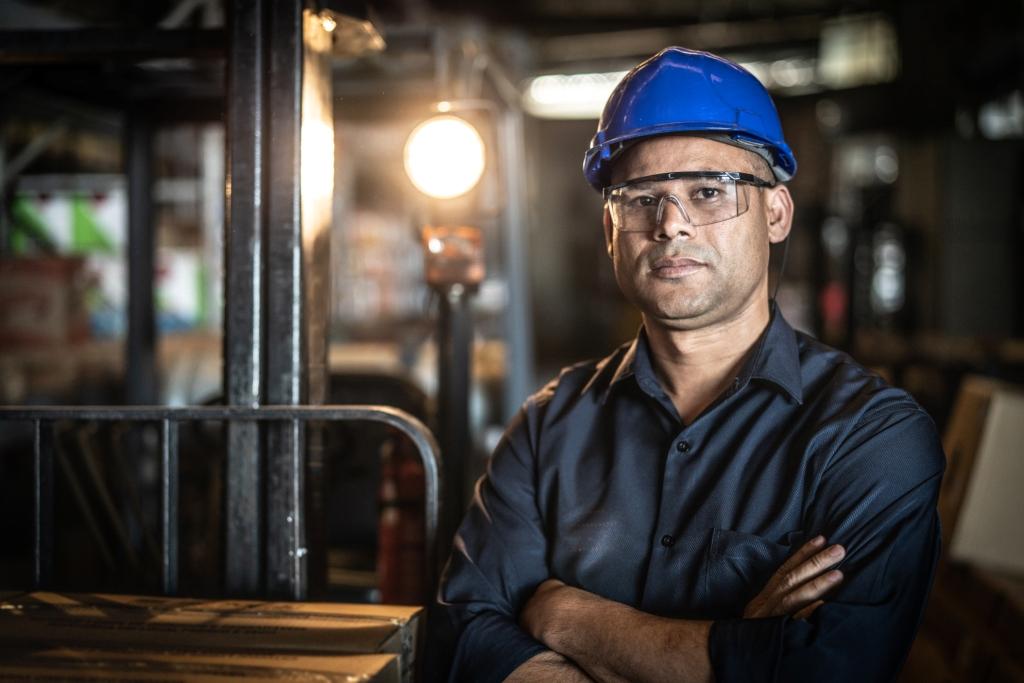Eye injuries are one of the most frequent type of injuries experienced in the maritime industry. There are nearly 2,000 American workers who suffer the pain of avoidable workplace eye injuries daily1, and nearly 60% of these injuries are due to workers wearing the wrong kind of eye protection – or no eye protection at all – at the time of the incident2. Both reasons are commonly confirmed during safety program assessments.
So why don’t workers wear eye protection while they work? One often-cited reason is discomfort. Employees often report their current eye protection is uncomfortable due to poor design, or that it fogs up in hot, humid environments. This hinders their vision, causing workers to constantly push glasses to the top of their head or down on their nose. If safety eyewear is uncomfortable or not effective, then compliance becomes an issue. Employers experiencing this problem should explore the newly available technologies to assist with eye injury prevention and maintain compliance.
Safety technology for eyewear has advanced significantly, and now employers can provide eyewear with safety features such as fog resistance, impact resistance, dirt and debris resistance, scratch resistance and UV protection.
Another commonly cited reason is simply, “I forgot.” Forgetting to wear eye protection is an excuse often found as a gap in the current safety process. Perhaps they forget because their supervisor tolerates non-compliance, or because safety compliance is not yet an established priority. Regardless of the reason, employers need to increase accountability for safety compliance on all levels. It is the employer’s responsibility to assess eye safety hazards in their workplace and take necessary precautions to protect employees through compliance with government regulations.
The use of correct eye protection while performing one’s job – such as safety glasses, goggles, face shields and helmets – can prevent most eye injury incidents. OSHA requires eye and face protection whenever there is a risk of injury that could be prevented by such equipment. Selecting the correct eye protection for each work scenario depends on several factors that include the specific type of hazard, the circumstances of exposure, other protective equipment utilized, and worker vision needs.
Here are 10 ways employers can help prevent eye injuries at their facility:
- Evaluate work areas. Assess all work areas and equipment for potential eye hazards. Review eye injury incidents to determine any trends.
- Conduct vision exams. Impaired vision can cause incidents. Vision testing should be provided during routine employee physical exams.
- Meet regulatory standards. Select effective and protective eyewear designed for specific hazards. Protective eyewear must be ANSI-rated to be in OSHA compliance.
- Make it a facility-wide requirement. Implement a 100% mandatory program for eye protection in all operations at your facility, rather than one that limits eye protection to certain departments, areas or jobs.
- Ensure a comfortable fit. Employees should be provided with protective eyewear that fits well and is comfortable. To aid in compliance, employers should consider using new technology to assist with anti-fog, UV protection, and scratch resistance while ensuring the eyewear has a fashion style workers will embrace. Employers should also provide repairs for eyewear and develop accountability measures so employees are personally responsible for their gear.
- Plan for eye emergencies. Establish first aid procedures for eye injuries. Install eyewash stations with easy access, especially where chemicals are used. Train personnel in basic first aid and eye injury treatment.
- Train about the importance of eye protection. Educational programs should be implemented to keep personnel aware of the importance of protective eyewear. Safety training in eye protection should be part of your regular employee training programs and covered during new employee orientation.
- Ensure management participation and support. Upper management support is critical to a successful eye safety program. Management should demonstrate support for the program by wearing protective eyewear whenever and wherever needed. Employees will look to management to set the example.
- Periodically assess policies. Regularly review and update your incident prevention policies. Set safety goals for NO eye injuries or incidents.
- Formalize your plan. Once your eye safety program is created, put it in writing. A copy of the policy should be displayed in work and employee gathering areas.
Wearing protective eyewear should be a non-negotiable aspect of any maritime company’s safety program. If you would like further guidance on implementing these steps at your facility, please contact your AEU Loss Control Manager. Eye protection resources are available for ALMA members on our member resource website here (login required).
This article was originally published by Longshore Insider on October 14, 2019.
RESOURCES
-
CDC - Eye Safety - NIOSH Workplace Safety and Health Topic. (n.d.). Retrieved September 20, 2019, from http://www.cdc.gov/niosh/topics/eye/.
-
McPherson, D. (2007). “PPE Compliance in the Workplace: A Continuing Concern”. National Safety Council (NSC) Congress.


